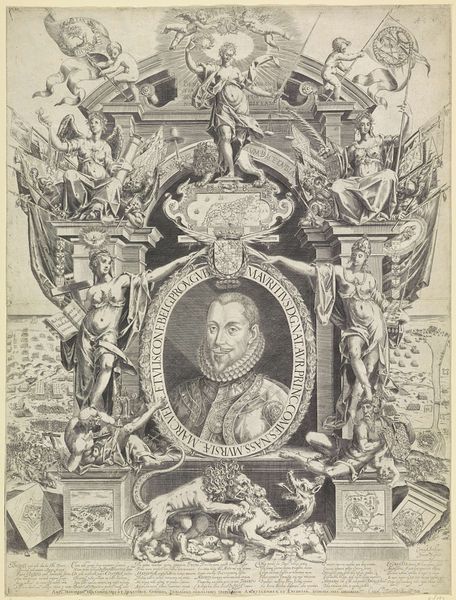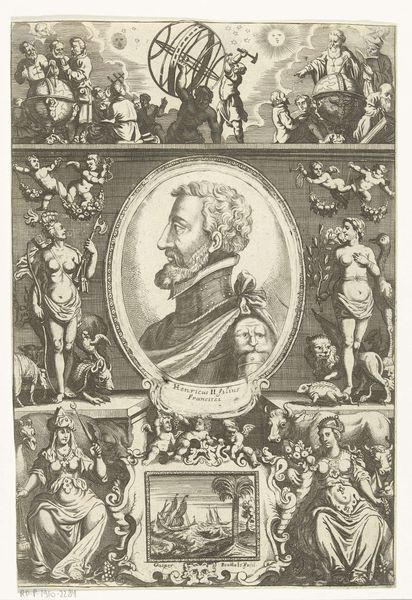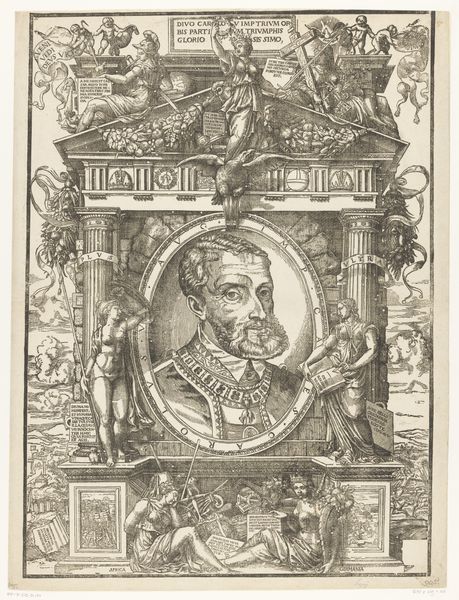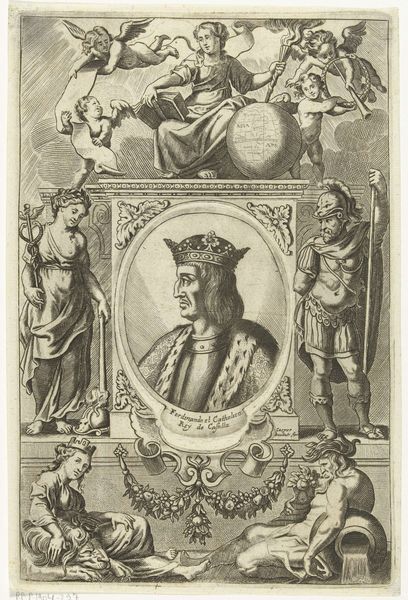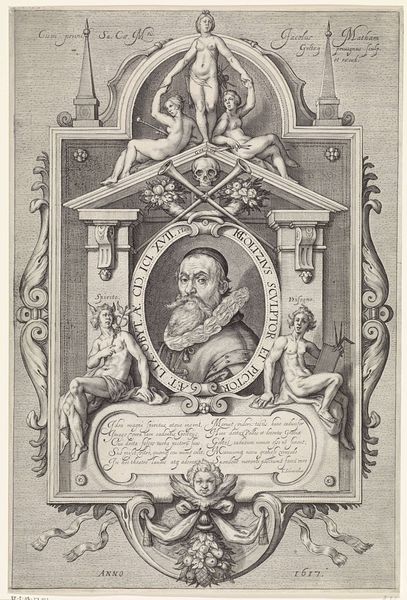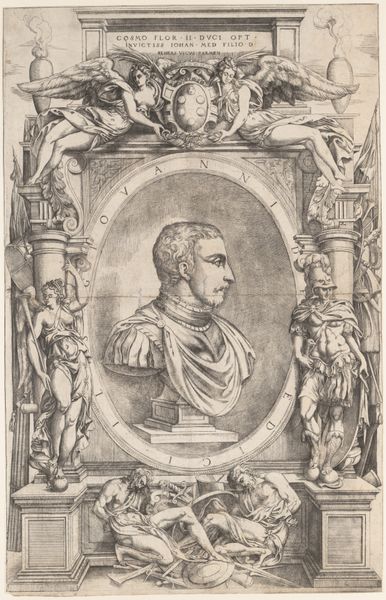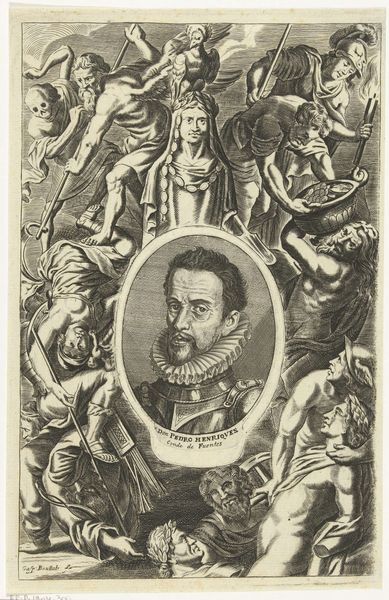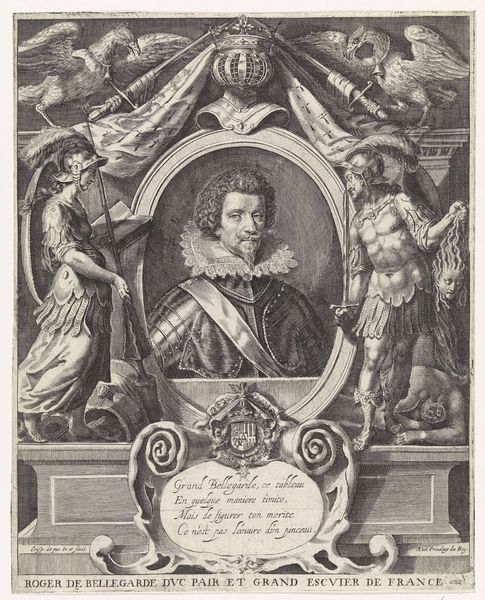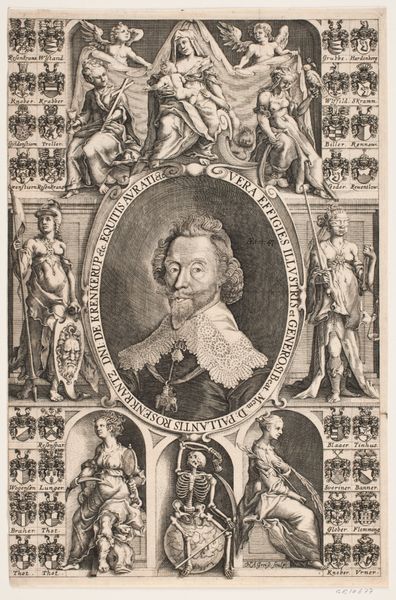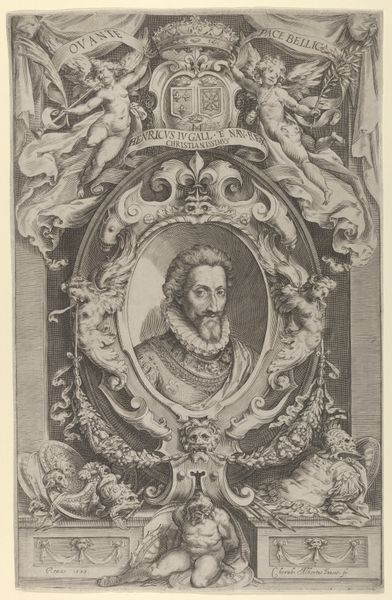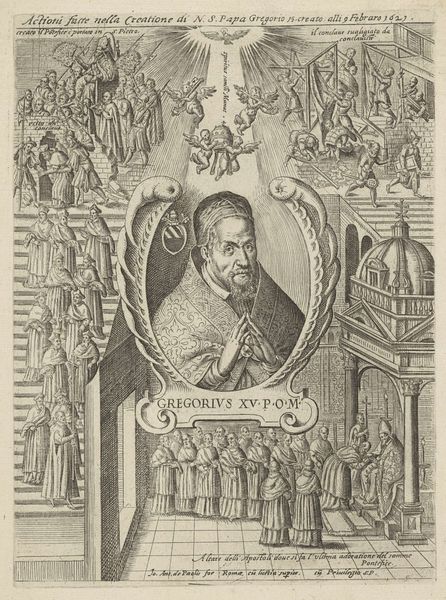
print, engraving
#
pen drawing
# print
#
pen illustration
#
pen sketch
#
old engraving style
#
mannerism
#
history-painting
#
engraving
Dimensions: height 504 mm, width 365 mm
Copyright: Rijks Museum: Open Domain
Curator: The print "Portret van Keizer Karel V," attributed to Nicolò della Casa, between 1538 and 1552, is part of the Rijksmuseum collection. The old engraving style depicts Charles V in a circular frame, embellished with symbolic figures and architectural elements. Editor: The sheer amount of symbolism and text crammed into the composition creates a suffocating feel. What I see first is not the individual portrayed, but the ambition behind the piece, a heavy burden of self-mythologizing. Curator: It is fascinating to look at the symbolic structure – the architectural setting references power and endurance, and the allegorical figures surrounding Charles emphasize specific qualities of his rule. Take note of the female figures on each side, they resemble peace and virtue personified. The double-headed eagle represents his Holy Roman Empire. Editor: While the visual language strives for timeless greatness, it feels very much of its time, steeped in imperial ideology. Those symbols worked for its 16th-century audience but now cast long shadows of colonial power, divine right, and inherited wealth that we cannot ignore. The armor and imperial insignia broadcast privilege and invite criticism of abuses of power. Curator: This visual propaganda intends to legitimize and magnify the ruler. However, Mannerism—the stylistic emphasis on artificiality and exaggeration, along with learned allusions—results in a strange dissonance. Editor: Absolutely. In viewing artworks like this, the visual representation must also invite conversations about the artist’s patrons and the historical context in which an artist creates this kind of glorifying tribute. Curator: Despite our present reservations, its historical value persists. We discern artistic tastes, cultural beliefs, and political power in that period. Even today, portraiture acts to confer meaning on an individual through visual markers. Editor: Indeed, art remains a dialogue. A conversation between the image, its creator, its subject, and crucially, its viewers. This dialogue holds the potential for progress toward a more just and empathetic world, one image at a time.
Comments
No comments
Be the first to comment and join the conversation on the ultimate creative platform.
